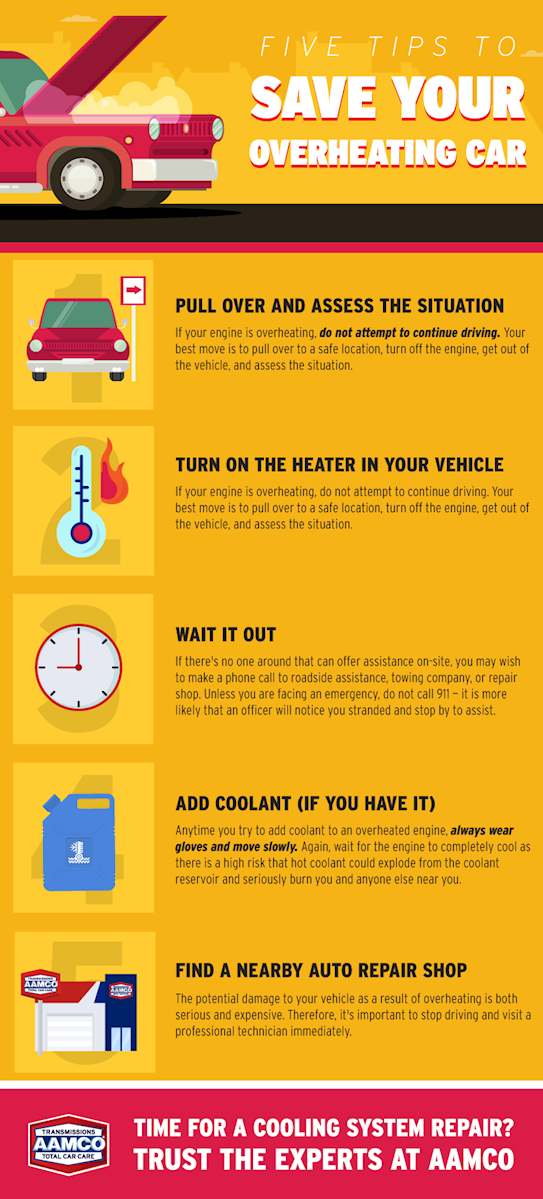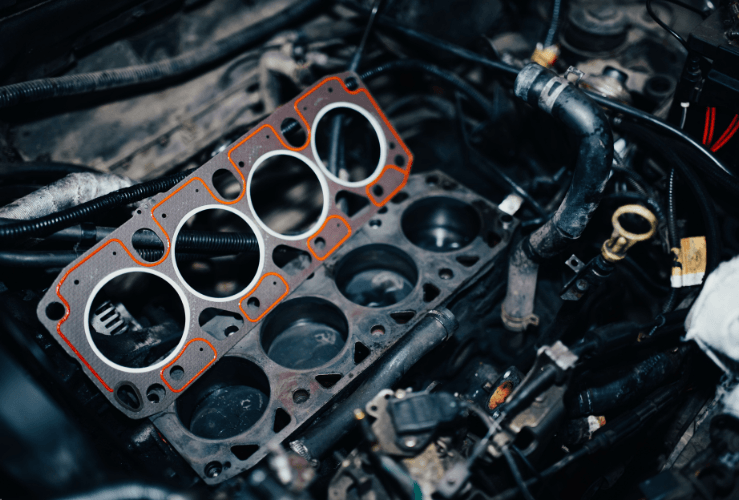You should not drive an overheating car very far. It’s risky and could cause serious damage.
Cars can overheat for many reasons, from low coolant levels to a failing water pump. If your car’s temperature gauge is rising, it’s important to act quickly. Driving a car that’s overheating can lead to costly repairs. The engine could suffer permanent damage.
In this blog post, we will explore how far you can safely drive an overheating car. We will also discuss the steps you should take to prevent further damage. Understanding these factors can save you a lot of trouble and money in the long run. Stay tuned to learn what to do if your car starts overheating while you’re on the road.
Introduction To Overheating Cars
Driving a car is fun and convenient. But what happens when it overheats? An overheating car can turn a smooth ride into a stressful situation. Many drivers face this issue. Knowing the causes and signs of overheating can help you stay safe on the road.
Common Causes Of Overheating
Several factors can cause a car to overheat. One common cause is a low coolant level. The coolant helps keep the engine temperature stable. If the coolant is low, the engine can get too hot.
A broken thermostat is another reason. The thermostat regulates the engine’s temperature. If it fails, the engine can overheat.
Leaks in the cooling system can also cause problems. These leaks can come from hoses, the radiator, or the water pump. If the cooling system loses fluid, the engine can overheat.
Lastly, a faulty radiator fan can lead to overheating. The fan cools the radiator. If it stops working, the engine can get too hot.
Immediate Signs Of An Overheating Engine
Recognizing the signs of an overheating engine is crucial. The temperature gauge is the first indicator. If it moves to the red zone, the engine is too hot.
Steam coming from under the hood is another sign. This steam means the coolant is boiling. You should stop driving immediately.
Strange smells can also indicate overheating. A sweet smell can mean coolant is leaking. A burning smell can mean oil is overheating.
Finally, reduced engine power is a clear sign. If the car struggles to accelerate, the engine may be too hot.

Credit: www.aamcoblog.com
Risks Of Driving An Overheating Car
Driving an overheating car can be very dangerous. The risks involved extend beyond just the vehicle. Damage to the engine and threats to safety should not be ignored. Understanding these risks can help you make better decisions on the road.
Potential Engine Damage
An overheating engine can suffer severe damage. Metal parts can warp and crack. This can result in costly repairs. The engine’s performance may decline over time. In extreme cases, the engine might seize completely. Replacing an engine is very expensive. It’s best to avoid driving an overheating car.
Safety Hazards To Drivers And Passengers
An overheating car can create safety hazards. Steam or smoke from the engine can reduce visibility. This makes driving dangerous. The car may break down in unsafe locations. Stopping on the highway is risky. Heat can also cause a fire in the engine. This poses a threat to both drivers and passengers. Always prioritize safety over reaching your destination.
Short-term Solutions
Driving an overheating car can be risky. Yet, sometimes you may need to drive it a short distance. In these cases, there are temporary fixes that can help you continue your journey safely.
Temporary Fixes While Driving
First, pull over and turn off the engine. Let it cool for at least 10 minutes. Check the coolant level and add more if needed. Remember to use a cloth to open the radiator cap slowly. This prevents burns from hot steam.
Next, look for leaks under the car. If you find any, seal them temporarily with tape or a patch. This can help keep the coolant from leaking out quickly.
Using The Heater To Cool The Engine
Turn on the heater full blast. This pulls heat away from the engine and into the cabin. It can help lower the engine temperature. Open the windows to let the hot air escape from the cabin.
Keep an eye on the temperature gauge. If it continues to rise, pull over and turn off the engine again. Repeat the process if necessary.

Credit: www.startrescue.co.uk
When To Pull Over
Driving an overheating car is risky. Knowing when to pull over can save your engine. Recognizing the signs early helps avoid severe damage.
Recognizing Critical Warning Signs
Watch for steam rising from the hood. This indicates severe overheating. The temperature gauge on your dashboard shows the engine’s heat level. If it reaches the red zone, your engine is too hot. A strange smell, like burning rubber or oil, signals trouble. Listen for unusual sounds, like ticking or knocking. These noises often mean the engine is suffering.
Safe Locations To Stop The Car
Find a safe place to pull over. Parking lots or side streets are good options. Ensure you are away from traffic. Turn on your hazard lights to alert other drivers. Avoid stopping on curves or hills. These spots can be dangerous. Stay clear of areas with poor visibility.
Long-term Consequences
Driving an overheating car can cause severe engine damage. The risk increases with every mile driven. Repair costs can skyrocket.
Driving an overheating car can lead to severe long-term consequences. The effects are not just limited to the immediate breakdown. The damage can impact the engine’s lifespan and your wallet.Impact On Engine Lifespan
An overheating engine suffers extreme stress. Prolonged exposure to high temperatures weakens metal components.- Cylinder heads can warp
- Pistons may seize
- Gaskets can fail
Costly Repairs And Replacements
Ignoring overheating can lead to costly repairs and replacements. Here are some potential expenses:| Component | Average Repair Cost |
|---|---|
| Head Gasket | $1,500 – $2,000 |
| Radiator | $300 – $900 |
| Water Pump | $300 – $750 |
| Engine Replacement | $4,000 – $7,000 |

Credit: bookmygarage.com
Preventive Measures
Driving an overheating car can cause severe damage. Understanding how to prevent this is essential. Proper maintenance can save you from costly repairs and ensure your car runs smoothly. Let’s explore some effective preventive measures.
Regular Maintenance Tips
Regular maintenance is crucial. It keeps your car in top condition. Follow these simple steps:
- Check the engine oil regularly.
- Inspect the radiator for leaks.
- Ensure the fan is working properly.
- Replace old hoses and belts.
Scheduling regular check-ups with a trusted mechanic can help. They will spot potential issues before they become major problems.
Importance Of Coolant Levels
Coolant is vital for your car’s cooling system. It prevents the engine from overheating. Always check the coolant levels:
- Open the hood and locate the coolant reservoir.
- Ensure the coolant is between the “Min” and “Max” marks.
- Top up the coolant if it’s low.
Use the correct type of coolant for your vehicle. Your car’s manual will have this information. Keeping coolant levels in check can prevent overheating.
Emergency Kit Essentials
Driving an overheating car is risky. Having the right emergency kit is crucial. It ensures you’re prepared for unexpected breakdowns. Here are the essentials you should carry in your car.
Must-have Tools And Supplies
A well-stocked emergency kit can save you time and stress. Start with basic tools. A wrench, screwdriver, and pliers are essential. Include a flashlight with extra batteries. Roadside emergencies often happen at night.
Carry a tire pressure gauge. It helps to check your tires regularly. Don’t forget jumper cables. They come in handy if your battery dies. Pack a reflective warning triangle. It alerts other drivers if you have to stop on the road.
Also, keep a first aid kit. It’s vital for minor injuries. Include bandages, antiseptic wipes, and gauze pads. Emergency blankets are useful too. They keep you warm during cold nights.
Using Emergency Coolant
Overheating often means low coolant. Always carry emergency coolant. It can help you reach the nearest repair shop. To use it, first, let the engine cool down. Never open the radiator cap while the engine is hot. It can cause burns.
Once cooled, slowly remove the cap. Pour the emergency coolant into the radiator. Fill it until it reaches the full line. Replace the cap securely. Start your engine and check the temperature gauge. If it stays stable, you can drive slowly to a mechanic.
Remember, this is a temporary fix. Get your car checked by a professional soon. Regular maintenance prevents most overheating issues.
Seeking Professional Help
When your car starts overheating, driving further can cause serious damage. In such cases, seeking professional help is crucial. A mechanic or towing service can save you from costly repairs. Let’s explore when to call a mechanic and whether to tow your car or drive it to the shop.
When To Call A Mechanic
Call a mechanic immediately if you see steam from the engine. This is a clear sign of overheating. Ignoring this can damage the engine. If the temperature gauge is in the red zone, pull over. Don’t risk driving further. Also, if there is a strange smell, such as burning rubber or plastic, call for help. These signs indicate severe problems that need expert attention.
Coolant leaks are another red flag. If you see coolant under the car, it’s time to call a mechanic. The coolant system is essential for keeping the engine temperature in check. Without it, the car will overheat quickly.
Towing Services Vs. Driving To A Shop
Towing services offer a safe way to get your car to a mechanic. They prevent further damage to your car. Driving an overheating car, even for a short distance, can be risky. The engine may seize or get damaged beyond repair. Towing is the safer option in most cases.
Driving to a shop may be an option if the shop is very close. But, only do this if the engine has cooled down and you can drive without the temperature gauge rising again. Keep a close eye on the temperature and be ready to stop if it rises.
Here’s a quick guide to help you decide:
| Situation | Action |
|---|---|
| Steam from engine | Tow |
| Coolant leak | Tow |
| Temperature gauge in red | Tow |
| Shop is less than 1 mile | Drive (if engine has cooled) |
Frequently Asked Questions
How Long Can You Drive An Overheating Car?
Driving an overheating car is risky. Stop immediately to prevent engine damage.
What Happens If You Keep Driving An Overheating Car?
The engine could seize. This may cause severe, costly damage to your car.
Can An Overheating Car Explode?
It’s rare. But, overheating may cause a fire or damage critical parts.
Should You Turn Off The Ac If Your Car Is Overheating?
Yes, turning off the AC reduces engine stress and helps cool it down.
How Can You Cool Down An Overheating Car Quickly?
Turn on the heater. It draws heat away from the engine, cooling it faster.
Conclusion
Driving an overheating car risks severe damage. Stop and cool down the engine. Prioritize safety over reaching your destination. Ignoring warning signs can lead to expensive repairs. Regular maintenance helps prevent overheating issues. Check coolant levels, radiator, and hoses often.
Use a professional mechanic for thorough inspections. Better safe than sorry on the road.
